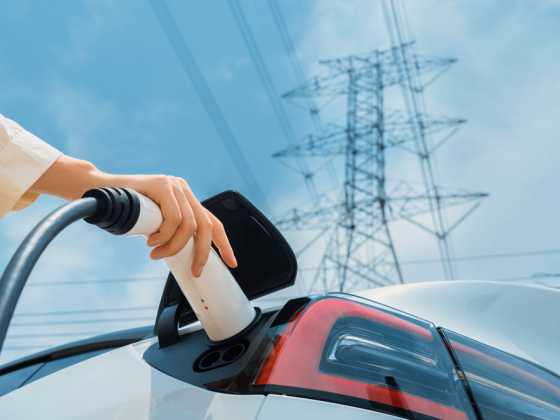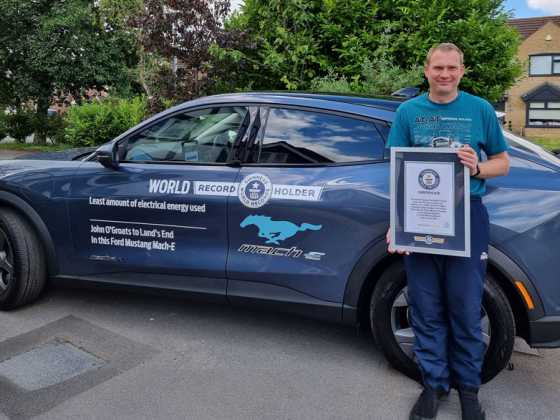Helping to decarbonise commercial fleets
We look back at GreenFleet’s first commercial vehicle event, which gave delegates the chance to discover how to reduce emissions and increase efficiency with the latest green vans and truck technologies.
 St Andrew’s Stadium, home of Birmingham City Football Club, played host to GreenFleet’s first commercial vehicle event on 1 July, recognising the growing demand for greener technologies in the commercial vehicle sector.
St Andrew’s Stadium, home of Birmingham City Football Club, played host to GreenFleet’s first commercial vehicle event on 1 July, recognising the growing demand for greener technologies in the commercial vehicle sector.
Designed to showcase the latest green van technologies, delegates from around the West Midlands area gathered to find out more about the alternative technologies on the market that can help combat the region’s air quality issues.
Birmingham was selected as the location following a DEFRA report that identified it as the second worst city in the UK for serious air quality and NOx issues. Demand for light commercial vehicles (LCV) is steadily rising, with official Society of Motor Manufacturers and Traders (SMMT) figures showing more than 28,000 new LCVs hitting British roads in May 2016, meaning it is more important than ever to consider the environmental impacts of LCV fleets.
Commercial GreenFleet brought together industry experts from the Low Carbon Vehicle Partnership (LowCV), Cenex, Alphabet, Autogas, Peugeot, Isuzu Trucks, Masternaut and Mitsubishi to discuss a number of technologies to reduce emissions and increase efficiency.
These ranged from Euro VI engines to electric powertrains to telematics, as well as funding advice to ensure that fleets benefit financially as they adopt greener alternatives.
Low Emission Van Guide
The LowCVP’s Andy Eastlake kicked off proceedings and, along with Keith Budden of Cenex, launched the updated version of their Low Emission Van Guide and accompanying Van Cost and Carbon Calculator (VC3).
The Low Emission Van Guide is aimed at operators of small to medium sized fleets of commercial vehicles (up to 3.5t gross vehicles weight) to help them to make cost and CO2 savings.
It offers useful background information on emissions and tips on what to consider when choosing a low emission vans, including topic sheets on the different options available.
A year after its initial launch, the guide has been updated to reflect the changing market, including new information for hydrogen vans and guidance on how to get involved in the low carbon van community.
It demonstrates the business, environmental and operational case for using low emission commercial vehicles, as well as providing fleet managers will a number of case studies, helping them to better understand the cost savings achievable through the use of low emission fuels and technologies.
Alongside the guide, the VC3 allows users to compare the economic and environmental performance of different van technologies and has been updated to include user‑defined payload data, bio-fuel blends and congestion charge information.
Policy and funding
Bob Moran, deputy head of the Office for Low Emission Vehicles (OLEV), was also on hand to provide an update on how UK government policy is driving the push for more zero emission vehicles.
He explained how the legally binding Climate Change Act 2008 requires an 80 per cent emissions reduction by 2050, meaning that huge improvements need to be made over the next few years.
Currently over 25 per cent of the UK’s total green house gas emissions come from transport and with around 90 per cent of transport emissions coming from road vehicles, this is an area where large cuts to emissions are being targeted.
While the freight sector has traditionally been seen as difficult to decarbonise, with emissions staying fairly flat since the 1990s, the government is making moves to try and encourage the uptake of greener technologies.
A number of changes to the Plug-in Car Grant (PiCG) were announced in late 2015, but the Plug-in Van Grant (PiVG) went unchanged, meaning prospective buyers can still claim up to 20 per cent of an eligible van, up to a maximum of £8,000 discount.
This discount applies to vehicles such as the Nissan e-NV200, which comes with an NEDC range of up to 106 miles. The government has also pledged to spend at least £600 million between 2015-16 and 2020-21 to support the uptake of ultra-low emission vehicles, which will be invested in infrastructure, incentives, research and development and manufacturing.
The government hopes that this investment will keep the UK on track for the target of almost all new cars to be effectively zero emission by 2040.
Sponsors Alphabet also discussed their business mobility solutions and green van financing options at the event.
Electric vehicles make up 4,030 of Alphabet’s fleet, with both the Nissan e-NV200 and the Renault Kangoo ZE giving customers the option to lease the latest low-emission van technology. Offering contract lengths from two to five years and monthly, quarterly and annual payment profiles, as well as a dedicated team to handle all fleet vehicle servicing and mechanical repair requests, Alphabet offers a flexible service for customers looking to make their fleets more efficient.
New technologies
Richard Tindle of Masternaut ran a session entitled ‘Technology to monitor performance’ that went through the ins and outs of vehicle telematics. Masternaut’s customers drive 4,984,000,000 miles a year and spend over 14,000 man years driving. With the help of Masternaut, they typically reduce distances driven by five per cent, meaning that total mileage was reduced by almost 250 million miles last year and time on the road was reduced by around 706 years. Additionally, Masternaut customers typically reduce fuel consumption by seven per cent, collectively saving around 60,000,000 gallons of fuel, which equates to a CO2 reduction of around 607,000,000kg.
Autogas also presented at the event, with business development manager Paul Oxford explaining how LPG can play a part in reaching emissions targets and improving public health (Autogas van drive, GreenFleet, issue 91).
LPG offers lower emissions than traditional petrol and diesel cars while offering similar driving characteristics. It has benefits over electric vehicles as refuelling is similar to that of petrol and diesel and there is already extensive refuelling infrastructure across the UK. A number of LCVs are already on the market that run on LPG and the national infrastructure currently totals over 1,400 sites.
Test drives
Delegates had the opportunity to test drive a number of different LCVs to get a real feel for the driving experience and performance.
Mitsubishi brought along its modified version of the UK’s best selling plug-in hybrid vehicle, the Outlander PHEV 4Work. Boasting a 1,500kg towing capacity and 495kg payload, the Outlander PHEV 4work is eligible for the PiVG and exempt from the London congestion charge.
The hybrid powertrain gives the SUV an impressive economy of up to 156mpg and emissions as low as 42g/km, with an electric range of up to 32.5 miles, which can be rapid charged to 80 per cent in around 30 minutes. Early adopters include Highways England and the Environment Agency.
Also available on the day was Peugeot’s new Expert van, with emissions from 168-189g/km
and a maximum payload of 988-1200kg. Peugeot also showcased the Bipper, a small van that has a maximum payload of 590kg and CO2 emissions as low as 115g/km, and the Boxer, with a payload of 1115‑1900kg and emissions from 158g/km.
The impressive Isuzu Forward was also on display. Powered by the Isuzu turbo intercooled OHC 4 cylinder diesel engine, the Forward is Euro VI compliant, comes equipped with easyshift transmission and can legally tow a trailer and load of up to 3500kg.
Further information
events.greenfleet.net/commercial






